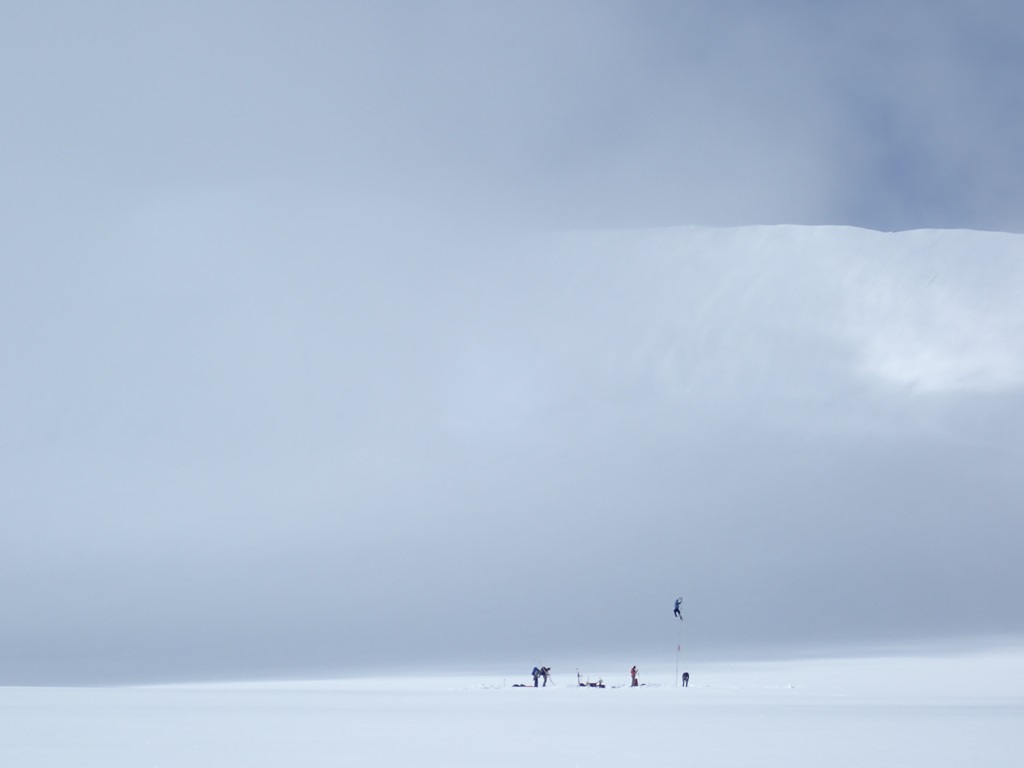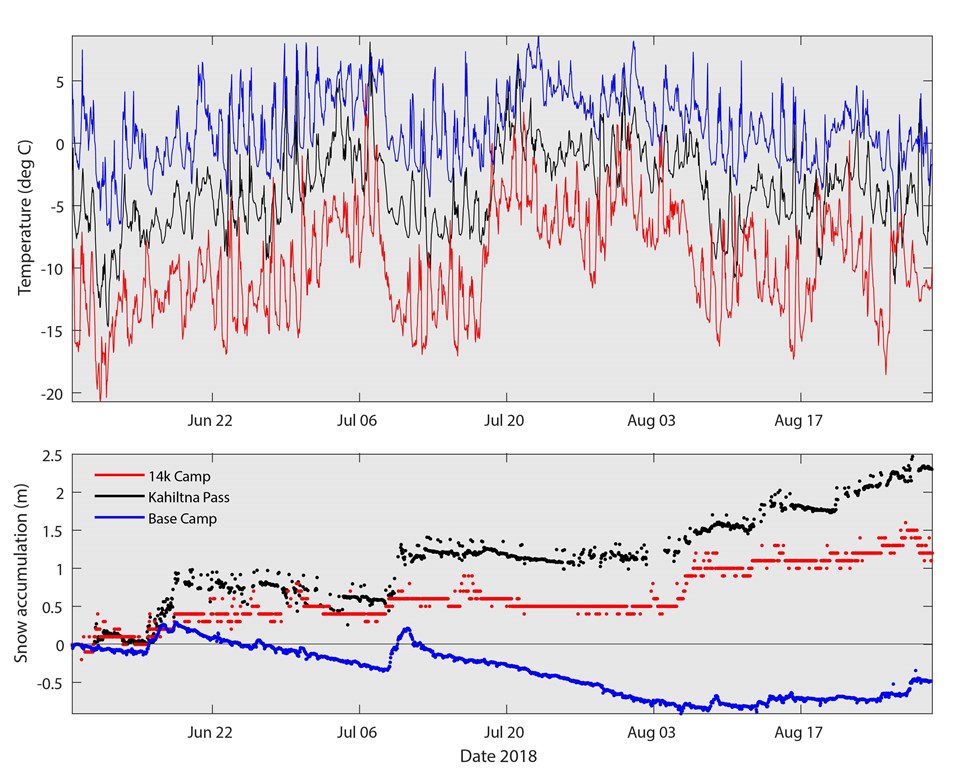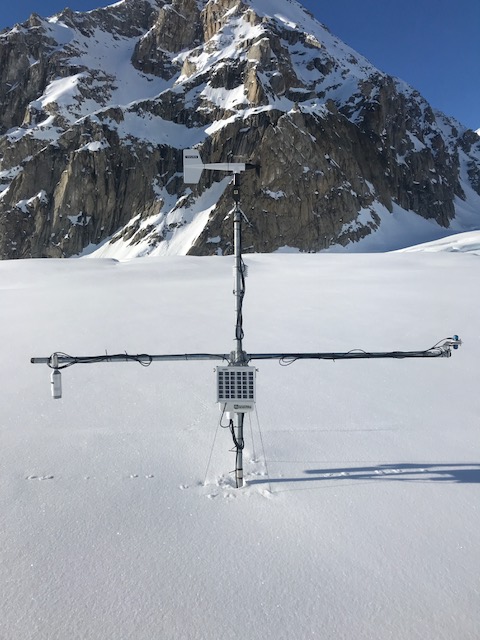
Kahiltna Weather Station - An overview of the data-to-date
In May and early June of last summer (2018), NPS installed three new weather stations along the West Buttress climbing route. The highest station is near the 14,000’ Camp in Genet Basin, with lower stations at Kahiltna Pass (10’200’) and Base Camp (7200’). More information about these stations was provided in a blog post on April 22, 2019. The installations are meant to be permanent, but in this first year, we consider the stations experimental, with weather-induced damage or failure a significant possibility.
As climbers, rangers, and glaciologists head into the field over the coming weeks, we will get more detailed information about the condition and performance of each station, but for now, we are happy to report that the data is flowing in. Two of the three stations (Base Camp and 14 Camp) are equipped with satellite telemetry, so when the batteries are sufficiently charged they send hourly transmissions of key variables. In the dark days of mid-winter, solar charge is minimal so we weren’t surprised to see the transmissions disappear for hours, days, or even weeks at a time. But as the sun returns, so too have the transmissions, so we know that at least the Base Camp and 14 Camp stations made it successfully through the winter. All the stations, including the non-telemetered one at Kahiltna Pass, internally log the hourly data even when they’re not transmitting, so once we access the stations later this month we’ll be able to download and share the full over-winter records of temperature, snow accumulation, and (at Base Camp and 14 Camp only) wind and solar radiation.
For now, we can share the highlights of last summer’s weather, and the outlines (based on telemetry) of what happened this past winter. Last summer’s record is shown in the plot below; key variables shown are temperature and snow accumulation at each site. Over the period of record (from June 8, when we first got all the stations running, to 11 September, when we made our final visit to the station before winter), maximum and minimum temperatures (in degrees C) were +4.7°C and -20.7°C at 14 Camp, +8.1°C and -14.7°C at Kahiltna Pass, and +8.6°C and -7.1°C at Base Camp. Overall, it was warmest in July, as you would expect.

The summer snow accumulation plot reflects both snowfall (when the curves rise) and melt/compaction (when the curves fall). Of the three stations, only Base Camp showed net melt over the course of the summer, losing over a meter of snow by early August (despite significant snowfalls in mid-June and mid-July) before snow started accumulating again in later August. Remarkably, Kahiltna Pass accumulated almost 2.5 meters of snow over the “summer”, with much of it coming during those same big snow events in mid-June and mid-July. And consistent with the observations of many climbers over the years, snowfall at 14 Camp was less than that near Kahiltna Pass, at about 1.5 meters. Some melt occurred between storms at Kahiltna Pass, but is barely distinguishable at the colder 14 Camp.
What do we know about this past winter? Keeping in mind that the record is still incomplete, we can say that the coldest temperature transmitted from 14 Camp this past winter was -38.1°C, reached four different times between December 13 and January 10. It reached a balmy -7.9°C on March 26 during the statewide warm spell. Snow accumulation since 11 September was only 1.8 meters, just barely more than 14 Camp received over the short summer. Maximum wind speed was at least 90 km/hr. At Base Camp, it got coldest (-26.6°C) on December 13th, it accumulated almost 4 meters of snow, and the winds reached only 47 km/hr. Once we download the full winter records, we’ll update this post to see if these statistics (especially the maximum wind speeds) change much.
For additional information please email project lead Michael Loso.
*Base Camp station: http://mesowest.utah.edu/cgi-bin/droman/meso_base_dyn.cgi?stn=BCPA2
*14,000’ Camp station: http://mesowest.utah.edu/cgi-bin/droman/meso_base_dyn.cgi?stn=FCPA2
Rangers found the Basecamp Weather Station in need of some excavation after a winter of snow accumulation. (NPS Photo / Jake Beren)

